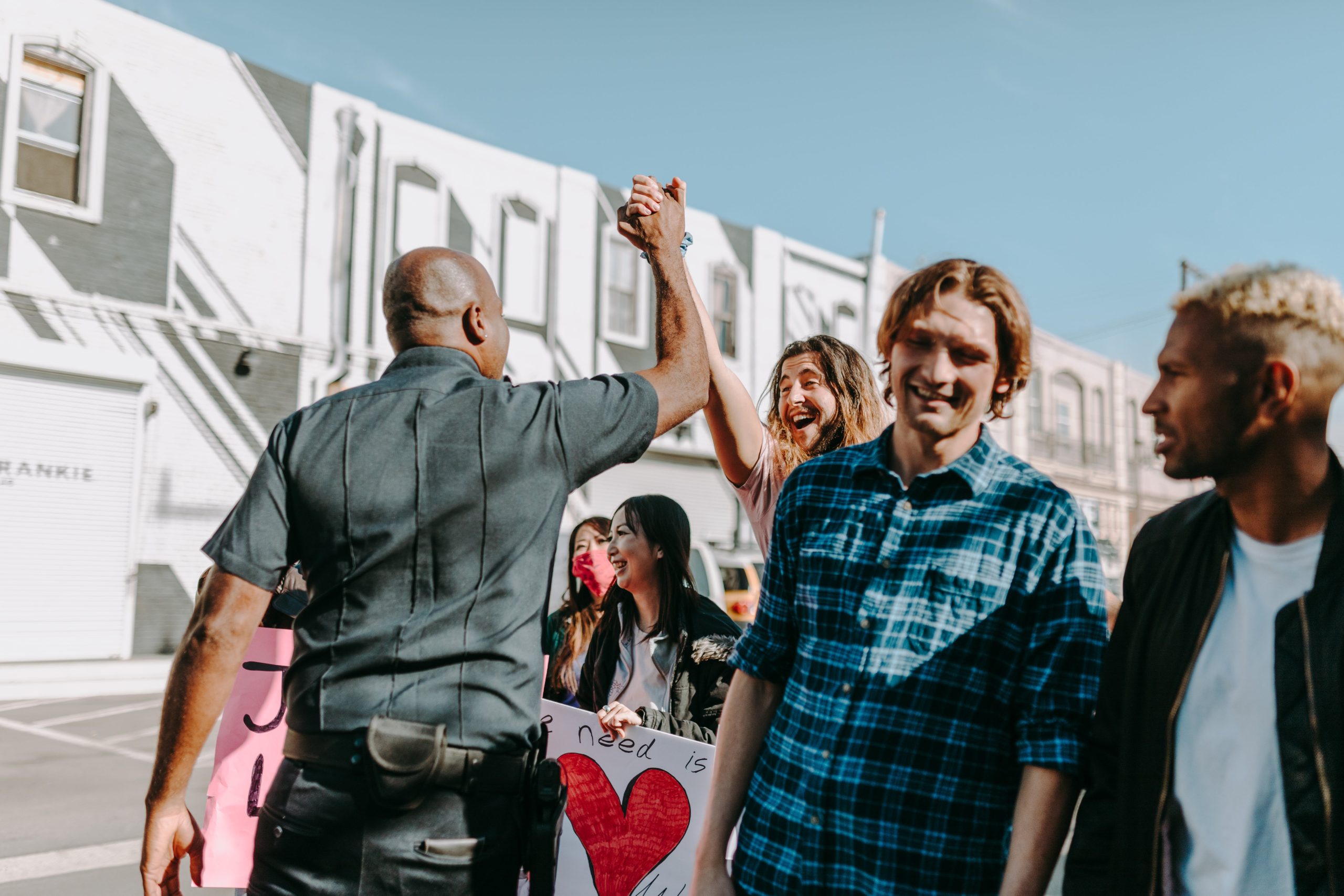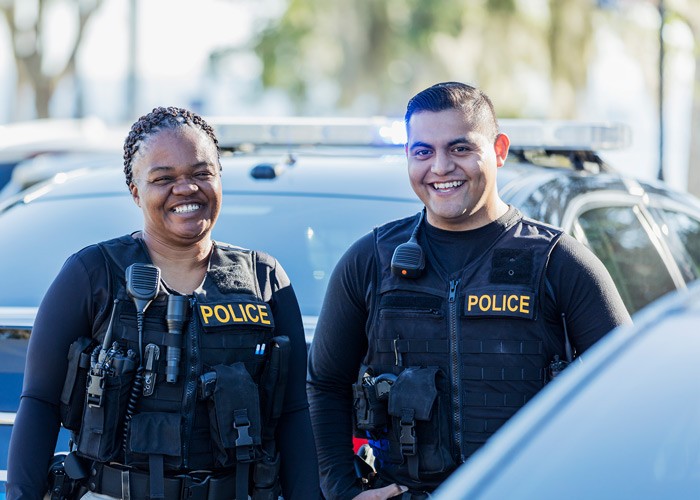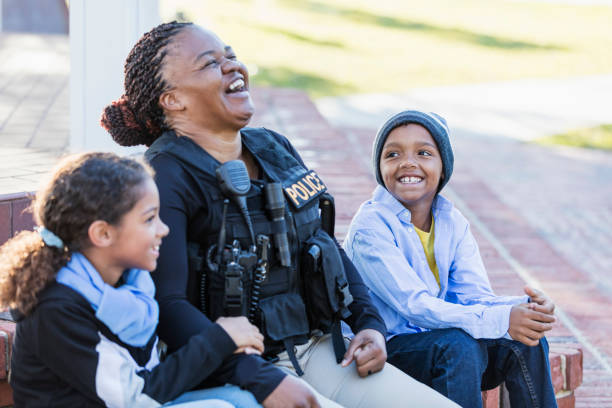Protecting Officers from Danger While Maintaining Positive Policing
With ambush-style killings of police rising and over 90% of officers feeling citizens have become more willing to physically resist arrest, protecting officer safety is paramount (COPS Office, 2022; NFOP, 2021). However, overly aggressive responses can damage community trust and effectiveness. Police leaders must implement tactics that reduce risks to officers while simultaneously building legitimacy through procedural fairness, accountability, and positive engagement with the public. Research shows utilizing a blended approach can enhance safety and justice. This article will examine evidence-based strategies to protect officers from harm without compromising community relationships or resorting to excessive force.
Prioritize Officer Wellness and Safety
Strengthening officers’ physical, mental, and emotional health enhances their safety in dangerous encounters. Specific wellness best practices include:
- Regularly training on defensive tactics, use of force, and de-escalation
- Providing top-quality protective equipment that is comfortable
- Rotating demanding assignments to mitigate burnout
- Offering confidential mental health resources to process trauma
- Monitoring for PTSD warning signs after violent incidents
- Limiting consecutive shifts and overtime to allow for sufficient recovery
- Promoting nutrition, fitness, and sleep hygiene for peak performance
When officers feel psychologically and physically secure, they think and respond more clearly in tense situations. Chiefs must lead by example in prioritizing holistic officer wellness to perform safely and effectively.
Employ Tactical Best Practices
Smart operational tactics protect officers while also reducing liability issues. Key principles include:
- Having officers patrol in pairs rather than alone
- Varying patrol patterns to keep suspects uncertain
- Parking squad cars to shield officers during traffic stops
- Approaching vehicles on passenger side for visibility
- Carrying tourniquets and trauma kits to treat injuries rapidly
- Wearing bullet resistant vests and seatbelts consistently
- Maintaining safe following distances during pursuits
- Requiring officers call out locations when responding to volatile calls
Equipping and deploying officers strategically utilizing safety best practices minimizes preventable risks from ambush, traffic stops, or pursuits.
Cultivate Specialized Skills
Advanced training allows officers to safely resolve tense encounters without excessive force. Examples include:
- Crisis intervention for mental health calls
- Verbal de-escalation and mediation
- Tactical emergency medical skills
- Advanced defensive tactics or martial arts
- Specialized units to build relationships with troubled individuals
Mastering specialized capabilities beyond basic tactical training provides more options for peacefully managing volatile situations. Research shows such skills training develops officer capacity to overcome resistance without resorting rapidly to force (Engel et al., 2020).
Limit Non-Emergency Use of No-Knock Warrants
No-knock warrants create avoidable risks for both officers and citizens as evidenced tragically in Louisville and Minneapolis. While possibly warranted in select rare cases involving hostages or terrorists, they should not be utilized for routine drug searches. Policies must:
- Require high-level, written command approval
- Obligate extensive surveillance first to confirm risks
- Mandate body-worn cameras record execution
- Order officers identify themselves immediately upon entry
- Compel supervisors to thoroughly review videos afterward
Reforming no-knock policies protects community members while keeping officers safer from entering ambiguous, high-risk situations.
Implement Early Intervention Systems
Early intervention systems utilize data analytics to detect officers exhibiting potentially concerning behaviors before they escalate or result in misconduct (IACP, 2016). Metrics tracked relate to use of force, citizen complaints, missed training, and more. When thresholds trigger notifications, supervisors can then mentor officers privately to get back on track, often through training opportunities. Developing these systems:
- Helps agencies identify needs proactively to support officers
- Provides a pathway to improve performance without discipline
- Reduces preventable incidents stemming from lack of training
- Sustains accountability while upholding due process
Proactively supporting officers preserves trust in leadership’s fairness should formal discipline still prove necessary.
Prioritize Procedural Justice with the Public
Research confirms departments perceived by citizens as operating with procedural justice principles experience less resistance and hostility (President’s Task Force, 2015). When officers:
- Give individuals a voice during encounters
- Convey respect through words and actions
- Explain decisions openly and honestly
- Act with sincerity in helping people
community trust develops, enhancing safety for all (Meares et al., 2015).
Strengthen Accountability to the Community
Officers must be held accountable for misconduct, but in a transparent, fair process that considers officers’ perspectives (Morin et al., 2020). To achieve balanced accountability:
- Invite community representatives onto oversight boards
- Publish disciplinary procedures and outcomes regularly
- Train internal affairs investigators on combating bias
- Explain consequences relate directly to offenses
- Allow officers chances to tell their side of the story
- Offer remedial training before resorting to termination
Ensuring discipline adheres to due process prevents coverups while also supporting officers acting lawfully and ethically.
Community trust and officer safety are mutually reinforcing – each depends on the other. By blending evidence-based tactics focused on reducing tensions, optimizing operations, and promoting transparency, law enforcement leaders can simultaneously protect their officers and the citizens they serve. While culture shifts take time, implementing these practical strategies puts agencies on the path toward safety and justice for all.
One way police managers can understand officers’ perspectives around safety is by conducting anonymous officer surveys. Regular confidential surveys gathering uncensored feedback from personnel would highlight where officers feel most at risk physically and psychologically. Tracking this data provides insights into how policy or training changes impact perceived dangers. Officers also may surface urgent safety issues not recognized by leadership. Giving officers an anonymous platform to share concerns makes them feel leadership prioritizes their wellbeing. Analyzing discrepancies between leadership and officer assessments would allow tailored solutions. Surveys demonstrate leaders truly want input from officers handling dangerous situations daily.






